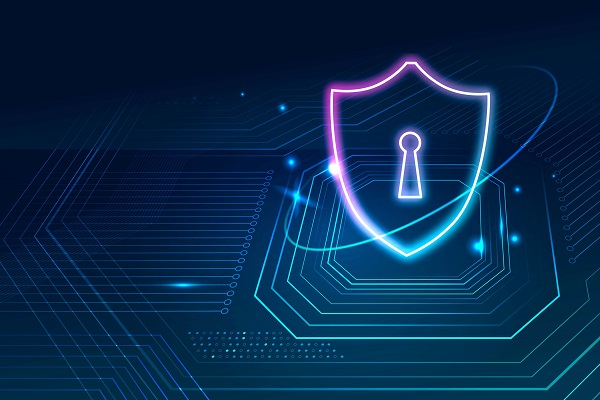What's PCI DSS compliance?
Expert Compliance Security Expert PCI Compliance for your business

In 2004, Visa, MasterCard, JCB, Discover, and American Express created a set of security guidelines known as the Payment Card Industry Data Security Standard (PCI DSS). The Security Programme, administered by the Payment Card Industry Security Standards Council (PCI SSC), is created to guard against data theft and fraud for both online and offline credit and debit card transactions.
Despite the fact that PCI SSC lacks legal power, it is assumed that any business handling credit or debit card transactions would adhere to the PCI DSS standard. PCI certification is regarded as the most secure technique to safeguard private data and information while assisting companies in establishing long-lasting, trust-based relationships with their clients.
Annually or on a regular basis, compliance with PCI DSS must be evaluated by a qualified security assessor (QSA) company approved by PCI SSC. For businesses handling significant quantities, the Internal Security Assessor (ISA) may also perform the Attestation of Compliance (AOC). By completing a Self-Assessment Questionnaire (SAQ) based on the types and quantities of their credit and debit card transactions, businesses can claim compliance.
The PCI DSS determines if your card data and transactions comply with the standard by comparing them to a set of criteria established by the PCI SSC. Because it has demonstrated compliance with the PCI DSS standard and that it safely processes credit cards in accordance with the standard, a PCI DSS certified business is a valued asset for customers.
On the other hand, the potential financial and reputational repercussions of any data breach should be enough to persuade any firm owner to prioritise data protection.
Sensitive consumer data theft or leakage will have negative effects for businesses. firms that violate these rules may also get fines from payment card firms. Revenues for the firms suffer as a result, and their reputations are badly harmed.
Companies might not be able to handle credit cards after a breach of card data, or they would have to shell out more money than they did for PCI security compliance at first. Because of this, maintaining PCI compliance is a safe and continual approach to guarantee the safety of payment systems and safeguard sensitive data.
PCI DSS has undergone a number of amendments since its introduction in order to stay up with changes in the cyber security landscape. While the fundamental PCI compliance guidelines never change, additional criteria are frequently added in response to cybersecurity and information security advancements.
History background of PCI DSS
Released in March 2022, PCI DSS 4.0 is the most recent version. The PCI DSS 4.0 version has about 400 control items and 12 criteria divided into 6 core goals.
The PCI DSS version's history is as follows
- PCI DSS version 1.0 was released on December 15, 2004.
- PCI DSS version 1.1 was released in September 2006.
- PCI DSS version 1.2 was released on October 1, 2008.
- Version 1.2.1 of PCI DSS was released in August 2009.
- PCI DSS version 2.0 was released in October 2010.
- PCI DSS version 3.0 was released in November 2013.
- PCI DSS version 3.1 was released in April 2015.
- The PCI DSS version was released on April 3, 2016.
- PCI DSS version 3.2.1 was released in May 2018.
- PCI DSS version 4.0 was released in March 2022.

Find right PCI SAQ for your business
Which PCI SAQ should your business use?
SAQ Type | Eligibility Criteria | Card Payment Acceptance Channels | Difficulty |
SAQ A | Card-not-present Merchants, All card holder data functions fully outsourced. | Card-not-present only: Mail order / Telephone order (MOTO) and e-commerce | Easy (24 Questions) |
SAQ A-EP | Partially outsourced e-commerce retailers for the processing of payments via a third party platform. | Card-not-present only: e-commerce | Difficult (192 Questions) |
SAQ B | Merchants using only: Imprint machines and electronic point-of-sale (POS) device. | Card-present and Card-not-present: brick and mortar and MOTO | Easy (41 Questions) |
SAQ B-IP | Merchants using only standalone PIN Transaction Security (PTS) devices approved payment terminals with an IP connection. | Card-present and Card-not-present: brick and mortar and MOTO | Average (87 Questions) |
SAQ C | Merchants with payment application systems connected to internet | Card-present and Card-not-present: brick and mortar and MOTO | Difficult (161 Questions) |
SAQ C-VT | Merchants with web based virtual terminals. | Card-present and Card-not-present: brick and mortar and MOTO | Average (84 Questions) |
SAQ P2PE | Merchants using only hardware payment terminals in a PCI listed P2PE solution. | Card-present and Card-not-present: brick and mortar and MOTO | Easy (34 Questions) |
SAQ D Merchant and Service Provider | All other SAQ Eligible merchants and SAQ Eligible service providers | Card-present and Card-not-present: brick and mortar, MOTO and e-commerce | Extreme (328 questions for merchants; 370 questions for service providers) |
Searching for a hosting solutions supplier who complies with PCI DSS? Look nowhere else!
PCI DSS Prerequisites
All businesses that accept, handle, and transmit payment cards are subject to PCI DSS. To handle cardholder data and ensure a safe infrastructure, PCI SSC has a total of 12 criteria. More than 400 testing processes must be performed in accordance with the 12 PCI standards for the organisation to be PCI compliant.
- Use firewall configuration and use to safeguard cardholder data.
- Establish and put into practice guidelines for router and firewall setup.
- Establish a firewall and router configuration that forbids communication between any system components in the cardholder data environment and any untrusted networks.
- Limit internet-based direct worldwide access to any system part of the cardholder data medium.
- All mobile devices with internet connection that are used to access the network while they are not connected to the network should have personal firewall software installed.
- Ensure that firewall management operational processes and security rules are outlined, followed, and understood by all parties involved.
- For system passwords and other security settings, do not use the vendor's default values.
- Before putting any system on the network, always modify the manufacturer's default settings and values and delete or disable any unwanted default accounts.
- Strong encryption should be used for any non-console administrative access to devices.
- Maintain a list of all the system parts covered by the PCI DSS.
- To control the manufacturer's default settings and other safety parameters, make sure that security rules and operating processes are written, in use, and understood by all parties.
- The environment and cardholder data stored by each organization must be protected by shared hosting service providers.
- protect cardholder data.
- Keep cardholder data secure.
- By creating and executing rules, procedures, and processes for data retention and deletion of cardholder data (CHD), you may reduce the amount of time that cardholder data is stored.
- Even if it is encrypted, don't keep crucial authentication information after permission.
- Mask the main account number (PAN) if it has to be seen.
- Wherever the primary account number is kept, make it illegible.
- Establish and put into place processes to prevent disclosure and abuse of the keys used to safeguard the stored cardholder data.
- All key management methods and encryption key techniques used to encrypt cardholder data should be documented and put into practice.
- To secure the stored cardholder data, security rules and operational processes must be established, followed, and known by all parties.
- Transmit cardholder data securely when using open, public networks.
- When sending critical cardholder data over open, public networks, use robust encryption and security mechanisms.
- Never utilize end-user messaging technology to communicate your Primary Account Number (PAN) information without a password.
- Make sure that security rules and operational processes are written down, followed, and understood by all parties involved in order to encrypt the transfer of cardholder data.
- Defend against malware on all platforms, and frequently update antivirus software.
- On any computers that are frequently infected by malware, install antivirus software.
- Ensure that all anti-virus defenses are functioning correctly.
- Antivirus software must function properly and cannot be turned off by users.
- To shield systems against malware, make sure that security policies and operational processes are written down, followed, and understood by all parties involved.
- Create secure software and systems.
- Use credible outside sources to find vulnerabilities, and then rate them according to their risk.
- Install legitimate security updates offered by the manufacturer to guarantee that all hardware and software are shielded against known flaws.
- Develop all software programs in a secure manner.
- For any modifications to system components, establish change control processes and adhere to protocols.
- Find and correct typical weaknesses in software development procedures.
- Ensure that open web apps are secure against known risks by regularly monitoring emerging threats and vulnerabilities.
- To create safe systems and applications, make sure that security rules and operational processes are outlined, followed, and understood by all parties that are impacted.
- Limit access to cardholder data in accordance with business needs restricting who has access to system components and cardholder information.
- Any medium that has physically sensitive data should be protected.
- impose tight restrictions on the internal and external transmission and dissemination of any material.
- Keep access to and storage of media strictly under control.
- When it's no longer necessary for commercial or legal reasons, destroy the media.
- Defend against tampering with and replacing devices that physically interface with customers to acquire credit card data.
- Ascertain that all impacted parties are aware with the security rules and operational processes in place to limit physical access to cardholder data.
- Keep track of and keep an eye on all network resource and cardholder data access.
- Make a procedure that links each user's access to system components.
- Create a system for automated log review to replicate events.
- Time synchronization technology should be used to synchronize all crucial system clocks and timings.
What are the levels of PCI DSS compliance?
Depending on the volume of credit card, debit card, and prepaid card transactions made by the merchant each year, PCI compliance levels are categorised into four groups. Depending on the total yearly volume of credit card, debit card, and prepaid card transactions, there are two service provider tiers. What a company should do to stay in compliance with the PCI standard is outlined in the PCI DSS, Compliance level categorization.
All businesses and service providers covered by the PCI DSS must conduct an annual PCI DSS audit, albeit the frequency of the audit depends on the degree of compliance. They should also keep track of the PCI DSS Attestation of Compliance (AOC) form and perform an external network scan (ASV scan) once every three months.
Institutions known as merchants take credit card payments for the products and services they sell. Even if they use third parties to handle payment cards, these merchants are nonetheless accountable for PCI DSS compliance. Service providers are businesses that actively participate in and handle cardholder data on another company's behalf.
Get your pricePCI DSS Compliance levels for merchants are as follows.
| Merchants who process more than 6 million card transactions yearly are considered PCI DSS Merchant Level 1. |
|---|
| Certification requirements: Need both an AoC and RoC |
| Merchants who process between 1 and 6 million cards yearly are classified as PCI DSS Merchant Level 2. |
| Certification requirements: Need an AoC and may need a SAQ and RoC |
| Merchants processing between 20,000 and 1 million cards yearly are classified as PCI DSS Merchant Level 3. |
| Certification requirements: Need an AoC and SAQ |
| Merchants who process fewer than 20,000 card transactions yearly are classified as PCI DSS Merchant Level 4. |
| Need an AoC and often need an SAQ |
Service providers are categorised by credit, debit, and prepaid card processing during a 12-month period using two PCI compliance levels.
The following are the service providers' levels of PCI DSS compliance.
- Service providers who process more than 300,000 card transactions yearly are classified as PCI DSS Level 1 Service Providers.
- Service Providers that perform fewer than 300,000 card transactions yearly are classified as PCI DSS Level 2 Service Providers.
The PCI DSS Audit is what? What are the requirements for PCI compliance?
The following stages are included in Devolity PCI compliance process
An external QSA (Qualified Security Assessor) or an internal ISA (Internal Security Assessor) do the PCI DSS audit for Level 1 organisations.
The ROC and AOC Compliance Reports must be produced by the PCI QSA or ISA as proof of the firm's compliance with the PCI DSS standard if the company is found to conform with the PCI DSS requirements as a result of the PCI audit.
These reports legally attest to the organization's PCI DSS compliance, and they are good for one year. Before the report's validity date, the organisation must be re-audited, and the PCI DSS compliance report must be updated.
Providers of PCI Level 1 services are required to complete yearly on-site PCI audits, provide ROC and AOC reports, and deliver quarterly network scans carried out by PCI Approved Scanning Vendors (ASV) four times per year.
Instead than relying on external audits, PCI Level 2-4 organisations can demonstrate compliance by completing the PCI SAQ form (Self-Assessment Questionnaire). The PCI Approved Scanning Vendor (ASV) should conduct network scans for these businesses four times a year, or every quarter.
If considered required, the bank or other authorised institutions may request on-site audits of PCI level 2-4 merchants in order to get ROC and AOC reports.
Similar to this, PCI Level 2 service providers can verify their compatibility without external audits by completing a PCI SAQ form (Self-Assessment Questionnaire). Additionally, Level 2 service providers are required to offer quarterly and four annual network scans carried out by PCI Approved Scanning Vendors (ASV).
When they believe it essential, banks or other authorised organisations may ask for ROC and AOC reports by asking for on-site PCI audits of PCI Level 2 service providers.
PCI SAQ REQUIREMENT FORMThe four PCI compliance reports and forms that merchants and service providers must get are as follows
- The PCI QSA's Report on Compliance (ROC) provides the compliance control measures discovered during an on-site assessment.
- An certified PCI QSA report called an Attestation of Compliance (AOC) certifies compliance following an on-site audit.
- An external network vulnerability scan report produced by Approved Scanning Vendor (ASV) companies that have been approved by PCI SSC.
- Companies use the Self-Assessment Questionnaire (SAQ) Form to evaluate their own PCI compliance. Depending on the kind of card transaction, businesses use a variety of SAQ forms.
Report on Compliance (ROC) for PCI DSS Merchant Level 1 Compliance Requirements
- It is necessary to issue a Qualified Security Assessor (PCI QSA) or an Internal Security Assessor (ISA) that has been authorised by a corporate representative. In most cases, this is referred to as an on-site PCI DSS audit.
- PCI Approved Scanning Vendor (ASV) did a total of four network scans per quarter.
- Report on Attestation of Compliance (AOC).
Requirements for PCI DSS Merchant Level 2 Compliance
- Self-Assessment Questionnaire (SAQ) Form for the Year.
- PCI Approved Scanning Vendor (ASV) did a total of four network scans per quarter.
Requirements for PCI DSS Merchant Level 3 Compliance
- Self-Assessment Questionnaire (SAQ) Form for the Year.
- PCI Approved Scanning Vendor (ASV) did a total of four network scans per quarter.
Requirements for PCI DSS Merchant Level 4 Compliance
- Self-Assessment Questionnaire (SAQ) Form for the Year.
- PCI Approved Scanning Vendor (ASV) did a total of four network scans per quarter.
Requirements for PCI DSS Service Provider Compliance
| Level 1 Compliance | |
|---|---|
| ROC- Report on Compliance It is necessary to issue a Qualified Security Assessor (PCI QSA) or an Internal Security Assessor (ISA) that has been authorised by a corporate representative. In most cases, this is referred to as an on-site PCI DSS audit. | |
| PCI Approved Scanning Vendor (ASV) Did a total of four network scans per quarter. | |
| Report on Attestation of Compliance (AOC) | |
| Level 2 Compliance |
|---|
| Self-Assessment Questionnaire (SAQ) Form for the Year. |
| PCI Approved Scanning Vendor (ASV) did a total of four network scans per quarter. |

What Happens If You Fail To Comply With PCI DSS?
| Consequences | Description |
|---|---|
| Penalties | In the event that card data is stolen or disclosed, PCI regulators have the power to punish businesses severely. |
| Suspend credit card transactions | In the case of a data breach, PCI authorities may restrict you from accepting credit card payments and may forbid you from utilising your current card payment systems. |
| Mandatory forensic investigation | You could have to go through a pricey and time-consuming forensic investigation. |
| GDPR | Violations of personal information must be reported within 72 hours, or else there will be harsh consequences. |
| Liability for fraudulent transactions | If your client's private information is compromised, you might be held accountable in a fraud prosecution. |
| Costs associated with replacing a credit card | Credit card issuers may include the price of reprinting and altering credit cards. |
| Notification and credit monitoring | You might need to alert your clients of security lapses and provide impacted clients credit monitoring services. |
| Reassess PCI compliance | In order to resume accepting credit cards, you might need to go through a complete PCI DSS on-site assessment. |
Frequently asked questions
Security refers to the systems and rules that an organization uses to protect its intellectual property, and compliance means meeting the criteria that an outside organization has set as optimal procedures or legal requirements.
Your business will have accessibility to customer support representatives and, depending on the Security services package you select, direct consultancy services. Our customer service representatives and information technology experts are here to help.
Good security compliance helps safeguard a company's brand. It keeps its activities legal, affecting the company's bottom line, and Devolity is a security solution that protects the safety of an organisation's data.
Depending on the organization's size and kind, the procedure to become PCI DSS compliant might take two weeks to eight weeks.
Our expert team continuously monitors and evaluates as part of security compliance management. Information security compliance processes involve communication, documentation, and automation of controls and procedures.
With the help of Devolity Security compliance management, your businesses can create and maintain security policies and procedures that adhere to relevant laws, standards, and regulations. It is our job to make sure that your company has taken all the necessary precautions to avoid being the victim of a cyberattack or a data breach.
Discover The Reasons Behind Selecting Us.
Brands who trust on Devolity










